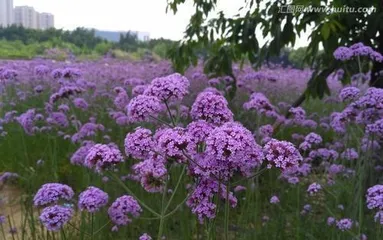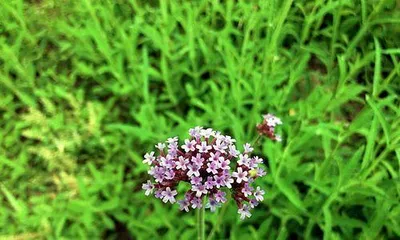Abstract:
Verbena is a very common perennial plant, not only with high ornamental value but also medicinal value. It can be planted in balcony gardens and also placed indoors as decoration. However, how to correctly plant and care for it? We will introduce it in detail below.

I. Growing Environment
Verbena can adapt to different growing environments, but it grows best in warm, dry places. It likes plenty of sunlight and well-ventilated environments. At the same time, it can also withstand lower temperatures, down to -15°C.
II. Characteristics
Verbena is about 50-70 cm tall, with straight stems and feathery leaves. In autumn, Verbena will produce soft flower spikes. Its flowers come in various colors, such as purple, pink, and white.

III. Uses
Verbena can not only be used as an ornamental plant but also for medicinal purposes. It helps to relieve problems such as anxiety, depression, and sleep disorders. In addition, Verbena can also be used as a spice in cooking.
IV. Care Tips: Watering
Verbena is relatively drought-tolerant, but it also needs moderate watering. Each watering should be sufficient, but not too frequent. In dry summer, you can water once a week; in winter, you can water at longer intervals.
V. Care Tips: Fertilizing
Verbena does not require many nutrients, so the frequency of fertilization should be controlled to once a year. It is best to fertilize in the spring to help it grow better.

VI. Care Tips: Pruning
Verbena grows relatively fast and needs proper pruning during its growing period. It is best to prune it to 10-15 cm before flowering so that new buds can develop better.
VII. Care Tips: Pest Control
Verbena is relatively resistant to pests, but it is still necessary to prevent pest infestations. It is best to regularly inspect the plant during the growing period and deal with pests promptly if found.
VIII. Care Tips: Transplanting
Verbena can be transplanted, but it is best to do so in the spring. When transplanting, the root system should be dug up completely and then moved slowly to the new location.
IX. Propagation Methods of Verbena
Verbena has two propagation methods: seed propagation and division propagation. Seed propagation is relatively difficult, so it is best to choose division propagation.
X. Steps for Division Propagation
For division propagation, the adult plant needs to be lifted, and the roots cleaned. Then, the root system is divided into several parts, each part should have buds and roots. Finally, these parts can be replanted in the soil.
XI. Common Problems of Verbena: Yellowing Leaves
The leaves of Verbena may turn yellow during the growing process, which is usually caused by lack of water, over-fertilization, or pests. If yellowing leaves are found, timely measures should be taken to solve the problem.
XII. Common Problems of Verbena: Withering
During the growing process, Verbena may wither and die due to lack of water or pest infestation. If the plant is found to be withered, the soil should be changed promptly or other measures should be taken.
XIII. Common Problems of Verbena: Mold
During the growing process, Verbena may become moldy due to excessive water or high air humidity. If mold is found on the plant, timely measures should be taken to dry it.
XIV. Verbena and People's Lives
Verbena has become an indispensable part of people's lives. While beautifying the environment, it also has a positive impact on people's physical and mental health.
XV.
Verbena is a strong-adapting perennial plant with rich ornamental and medicinal value. To correctly plant and care for it, some basic skills and knowledge are needed. I hope this article is helpful to you.